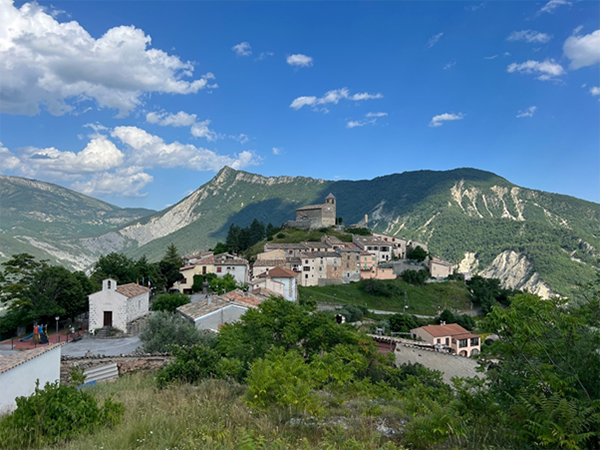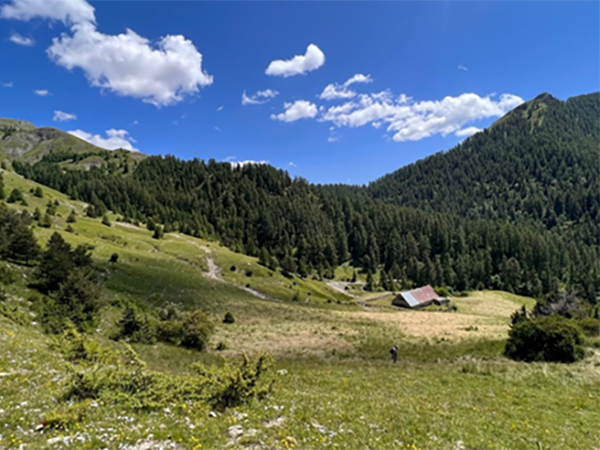Patrick Hegarty-Morrish
The aptly named French shepherd Jean de Brie had much to say of the nobility of his profession in the shepherding manual he wrote for Charles V of France in 1379. All the best in the Bible had been shepherds: Abel, Laban, Jacob, Tamer, Judah, and Moses. A shepherd should conduct himself—and Jean assumed it would be a he—with gravity, avoiding “the tavern, bawdy house and all dishonest places”. The shepherd’s crook, as the bishop’s crozier and the knight’s lance, had its place in the world “the maintain the public good”.1
Shepherds might be noble, but were nobles shepherds? One thing which has struck me during my research on pastoralism in fourteenth-century Haute-Provence is the complex relationship between social hierarchy and the quotidian practicalities of getting by. For what I have seen so far, nobility did not seem to have dictated one’s strategies for subsistence to any great extent. Coseigneurs were two a penny in some villages: in the 1345 Pasquerium enquiry organised by the Count of Provence’s Chambre des comptes, for example, one Pierre de Sauze and the other co-lords of Castellet-lès-Sausses claimed to have just a twentieth part of the lordship there.2 Many “nobles” might have lived in houses indistinguishable from those of their neighbours and perhaps smaller than a grasping merchant or notary up the road.

With a livelihood not dissimilar from the habits of their non-noble fellow villagers, these petty lords had animals to pasture on the alpage atop the mountains. Let us take, for example, the 1407 cadastre of the Alpine town of Digne-les-Bains, unusually early and unusual in enumerating the movable goods of the city’s inhabitants.3 There seems little to put between lord Guido Aperiolos’ household, which had eleven cows, one rowney, a donkey, a house, a field, a garden, two vineyards and a bit of land, and Jaques Bonet’s household, with six oxen, ten sheep, a donkey, two houses, stables, two vineyards and some land. Lord Guido was thoroughly outdone by the household of Nicola Poliveri, who had two donkeys, a rowney, some 450 goats and sheep, a lodging-place, a house, three meadows, seven vineyards, a garden, four hundred casks of wine for sale, and 250 florins in coin and 200 florins in debts. Rich and poor, noble or not, each had their animals to pasture, and nobility did not seem to dictate wealth nor livelihood.

Indeed some lords might even have specialised in shepherds and depended on payments for raising other people’s animals. In 1392 through the herding contract mejerie, the noble Guillaume of Reillane agreed to look after eighteen cows owned by one noble Mathens de Molandino, also of Reillane. This contract required that Mathens pay Guillaume for his cowherding and that Guillaume keep half the calves, milk, cheese or leather garnered from the animals.4 A lord who got his hands dirty, then, and who deigned to partake in the thoroughly ignoble exercise of selling his labour.
But nobility did confer certain privileges, and these were hotly contested. Giraud and Geoffroi Blacas told the 1345 enquiry that they were co-lords of Castellet-lès-Sausses, and so they had the right “to pasture with their animals and freely send their animals to pasturage in the territory of Castellet-lès-Sausses, without paying the pasturage tax (pascayragium) like the other co-lords of the castrum”. Protecting these privileges was so important that Pierre de Sauze and his junta of local notables spent much of the summer of 1344 fighting an outsider, Raymbaud of Saint-Paul-de-Vence, over the right to pasture at Castellet-lès-Sausses. Raymbaud said he had part of the lordship and so the right to pasture; Pierre denied it. When Pierre acquired an act from the local judge ordering the expulsion of Raymbaud’s animals, he and his associates attacked Raymbaud’s shepherds, took two sheep and left the rest of his animals running to and fro across the mountains.5 We don’t know how this conflict ended, but we do know that it continued into 1345 when told the Cour des comptes that Raymbaud was an outsider pasturing illegally in the castrum. Here the rights associated with lordship were jealousy guarded by villagers and outsiders alike. Nobility was a weapon in a long grudging enmities, and decided—often between roughly comparable households—who got a slice of the natural resources of the pastoral environment.
On the alpage, then, lordship mattered. When livelihoods were little separable what nobility constituted had to be asserted and wielded. An important way of doing so was pasturing one’s animals without the restrictions or payments which plagued one’s fellow villagers. Thus Provençal folk attempted to solidify the small differences between neighbours on the slippery and rancorous ladder of social hierarchy.

Footnotes
- Jean de Brie, The Medieval Shepherd: Jean de Brie’s Le Bon Berger (1379), ed. Carleton W. Carroll and Lois Hawley Wilson, Medieval and Renaissance Texts and Studies, v. 424 (Tempe, Ariz: ACMRS Arizona Center for Medieval and Renaissance Studies, 2012). ↩︎
- Marseille, Archives départementales des Bouches-du-Rhône, B 160 fol. 138. ↩︎
- Digne-les-Bains, Archives Communales de la Marie de Digne-les-Bains, BB 30. ↩︎
- Digne-les-Bains, Archives départementales des Alpes-de-Haute-Provence, 2E15052, 30 July 1392. ↩︎
- B 160, f. 144v. ↩︎

